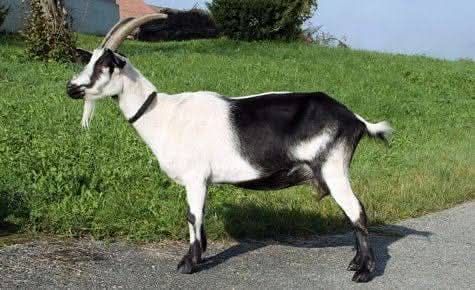Characteristics of the Peacock Goat
The Peacock Goat, named for its distinctive and striking coat patterns reminiscent of a peacock’s feathers, is a rare and unique breed often associated with premium livestock farming. Although not widely recognized as a mainstream breed, the name suggests a goat with ornamental and economic appeal, making it an exciting choice for breeders and farmers aiming for niche markets.
Characteristics of the Peacock Goat
1. Physical Attributes:
Unique multicolored or patterned coat, ideal for aesthetic appeal.
Medium to large size with strong, sturdy builds, suitable for diverse climates and terrains.
High adaptability, making them suitable for various farming environments.
2. Productivity:
Moderate to high milk yield depending on the lineage, useful for dairy production.
Dual-purpose for meat and milk, enhancing profitability.
High fertility rates, ensuring consistent herd growth.
3. Temperament:
Generally docile and easy to manage, making them suitable for beginner farmers.
Social animals that thrive in well-maintained herds.
Business Potentials of Peacock Goat Farming
1. Premium Meat Production:
Peacock goats can be positioned in niche markets as providers of high-quality, organic goat meat. With growing demand for specialty meats in urban areas, this breed offers an opportunity for premium pricing.
2. Dairy and Byproducts:
Milk from goats is highly nutritious and sought after, especially for those with lactose intolerance.
Peacock goats can contribute to small-scale artisanal cheese, butter, and yogurt production.
Goat milk soap and cosmetics, made from their milk, add a value-added product line.
3. Aesthetic and Breeding Markets:
The unique coat pattern makes them attractive to hobby farmers and enthusiasts who value ornamental breeds.
Selling Peacock goats as breeding stock can fetch high prices in markets focused on rare breeds.
4. Agrotourism and Education:
Peacock goats can be a centerpiece for agritourism initiatives, attracting visitors interested in rare livestock.
Farms can offer educational tours or workshops on sustainable goat farming and animal husbandry.
5. Sustainability and Low Maintenance:
Goats are efficient converters of fodder to meat and milk, reducing feed costs.
They can graze on marginal lands unsuitable for crops, turning otherwise wasted areas into productive assets.
Challenges to Consider
1. Limited Awareness:
Since Peacock goats are relatively rare, farmers may need to invest in marketing and awareness campaigns.
2. Initial Investment:
Acquiring high-quality breeding stock may involve significant upfront costs.
3. Specialized Management:
Maintaining their unique coat and ensuring high-quality breeding may require additional resources.
Strategies for Success in Peacock Goat Farming
1. Focus on Niche Markets:
Target consumers looking for organic, premium-quality meat and dairy.
Develop relationships with restaurants and specialty food producers.
2. Invest in Branding and Marketing:
Highlight the aesthetic appeal of the breed to attract buyers in agrotourism and ornamental markets.
Use social media and e-commerce platforms to reach a wider audience.
3. Partnerships and Networking:
Collaborate with livestock associations to promote the breed.
Partner with educational institutions for research and development.
4. Value Addition:
Explore creating artisan products like goat milk soaps or leather from their hides.
Offer subscription-based services for milk delivery or agrotourism experiences.
The Peacock Goat holds immense potential as a versatile and profitable breed. By focusing on niche markets, strategic branding, and value addition, farmers can capitalize on its unique appeal. Whether for meat, milk, or ornamental purposes, this breed promises a sustainable and lucrative venture for those willing to invest in its management and promotion.




